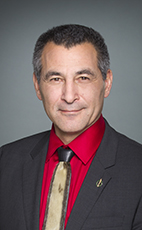Mr. Speaker, I will be splitting my time with the hon. member for Edmonton Centre.
Thank you for recognizing me and allowing me the opportunity to stand in the House today to discuss this heartbreaking and family-shattering issue.
Sadly, suicide is a word we all know only too well. Nowhere is the pain of self-inflicted death more prevalent and more poignant than in our indigenous communities.
My heart bleeds for the residents of Attawapiskat First Nation, and I thank my hon. colleague, the member for Timmins—James Bay, for asking for this emergency debate today.
As we previously heard, I hope that this is not a debate but a coming together of all of us in this chamber to truly begin to search for solutions.
In the north of our land and in the east, the west, and the centre, we all know the pain and anguish of losing someone close, but those of us of indigenous descent also know far too well the tragedy of suicide and the despair that caused it and that it left in its wake.
I have been personally affected by the suicide of family members and friends. Can members imagine telling their cousin's five-year-old son that his father is not coming back again? I had to do that. I had to cry with my aunt over the loss of her son, my cousin. I have had to talk to my teenage daughter, who lost one of her best friends to suicide.
Nunavut has one of the highest rates of suicide in the world. Almost every person in our territory, as well in Nunavik in the north of Quebec, has been personally touched by the suicide of a loved one. Rarely a week goes by that there is not a suicide in our territory. There have been roughly 500 suicides in Nunavut since it was created in 1999.
The rate of suicide of Inuit in Nunavut is about 10 times the national average. It happens far too often among Inuit boys between the ages of 15 and 19. In fact, it is 40 times higher than it is among their peers in the rest of Canada. This is unacceptable.
This rampant crisis has an impact on all aspects of life in Nunavut. It affects the well-being of the family. It affects students in schools who have lost a classmate or a friend. It has an impact on the spirit of the community and on society as a whole.
While the rate of suicide is staggering, these numbers do not even include those who have attempted to take their own lives and luckily have received help in time.
Many Nunavut Inuit work hard to prevent suicide despite the trauma, grief, and loss that overwhelm them. I have seen many parents who have lost their children to suicide in Nunavut take up the challenge and do what they can to help prevent this crisis that is affecting us. I know how hard it is for them to talk about it.
We are working in partnership with Nunavut Tunngavik Incorporated and the government of Nunavut to identify joint actions to improve mental wellness in our territory.
Last month, the government of Nunavut, Nunavut Tunngavik Incorporated, the RCMP, and the Embrace Life Council released Resiliency Within, a one-year suicide-prevention strategy action plan. The plan incorporates recommendations from a 2015 coroner's inquest and outlines a number of initiatives for community engagement, as well as training, programs, and support. This is a first step toward the development of a longer-term plan, and I will do what I can to support this initiative.
I know that Inuit Tapiriit Kanatami is also seized with this issue, and I want to recognize Natan Obed, the president of ITK, for his leadership on this issue. ITK is in the midst of drafting a national Inuit suicide-prevention strategy that will be released in August. It will help coordinate suicide-prevention efforts among the four Inuit regions: Nunavut, Nunavik, Nunatsiavut, and the Inuvialuit region. This is very valuable and important work.
While the responsibility for the provision of health services rests with the territorial government, Health Canada considers the high rate of suicide in Nunavut a big priority. Health Canada is investing $96.5 million over five years in the territory to support mental health services. This includes money specifically for suicide prevention. It is also providing $33.4 million over three years to the territorial health investment fund that is aimed at improving health services, including projects that help increase mental health services in Nunavut. Health Canada is also working to ensure nurses are prepared and trained to work in northern communities.
I could go on about the investments our federal government is making to try to reduce the number of suicides in Nunavut and elsewhere, and there are many. However, the fact is that in our territory, in Attawapiskat, in Nunavik, and in other indigenous communities across this great country there is a tragic, urgent situation where so many young people are ending or attempting to end their lives. This is a complex issue that requires a broad response. It is not and cannot be the sole responsibility of one level of government or one organization. It is the responsibility of all of us as a society to work together to find lasting solutions that will change the lives of people and make them feel that life is worth living. We need to deal with this crisis now, but we also need to look to the longer term and address some of the underlying causes. That means better access to housing, health care, and other social services, as well as education, training, and employment opportunities—in other words, a future.
It is not a partisan issue. It is one that we all need to make a priority, no matter where we live and no matter which party we represent.
Qujannamiik, merci, thank you.

